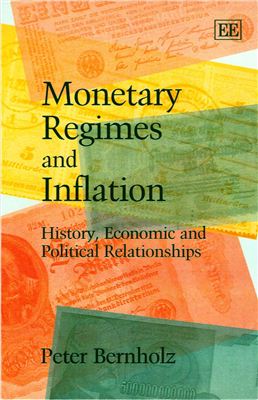Edward Elgar Publishing, 2003. - 224 pages.
This book explores the characteristics of inflations, comparing historical cases from Roman times up to the mode day. High and moderate inflations caused by the inflationary bias of political systems and economic relationships – and the importance of different monetary regimes in containing them – are analyzed.
Peter Beholz demonstrates that certain macroeconomic traits have been stable characteristics of inflations over the centuries, and illustrates their causes; the development of real stock of money, real exchange rate, real budget deficit and of currency substitution. He goes on to explain that metallic monetary regimes allow substantial inflations by debasement – 4th century Roman Empire experiencing the highest of them – but are dwarfed by the experience of hyperinflations. These occurred only under discretionary paper money regimes. To demonstrate this and their characteristics, all twenty-nine hyperinflations are studied. In contrast to the existing literature, the book also examines political conditions that allow a retu to stable monetary regimes, given the inflationary tendencies of political systems. Finally, economic measures and institutional reforms to end high and moderate inflations are discussed.
This book explores the characteristics of inflations, comparing historical cases from Roman times up to the mode day. High and moderate inflations caused by the inflationary bias of political systems and economic relationships – and the importance of different monetary regimes in containing them – are analyzed.
Peter Beholz demonstrates that certain macroeconomic traits have been stable characteristics of inflations over the centuries, and illustrates their causes; the development of real stock of money, real exchange rate, real budget deficit and of currency substitution. He goes on to explain that metallic monetary regimes allow substantial inflations by debasement – 4th century Roman Empire experiencing the highest of them – but are dwarfed by the experience of hyperinflations. These occurred only under discretionary paper money regimes. To demonstrate this and their characteristics, all twenty-nine hyperinflations are studied. In contrast to the existing literature, the book also examines political conditions that allow a retu to stable monetary regimes, given the inflationary tendencies of political systems. Finally, economic measures and institutional reforms to end high and moderate inflations are discussed.

